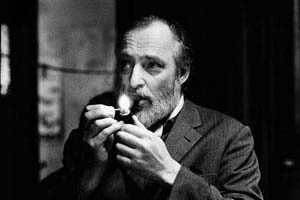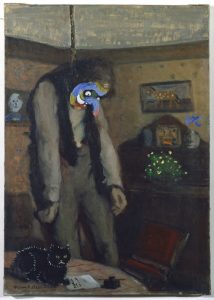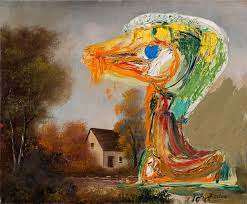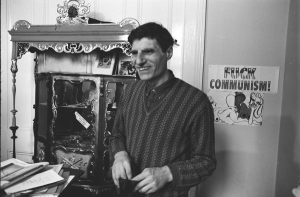
The following text is an extract from David Black’s book. Psychedelic Tricksters: A New Secret History of LSD (BPC Publications, 2020)
(6 April 21)
In 1965 Timothy Leary sent Michael Hollingshead, the Englishman who introduced him to LSD, to London with 5000 trips of LSD. One part of his mission was to rent the Albert Hall for a psychedelic jamboree with big-name rock bands and poets; and with Leary himself hosting the event in his role as the High Priest of LSD. This plan never came off, because of Leary’s bust for marijuana possession in the US at the end of 1965. Another task was to set up a centre for running LSD sessions and promoting psychedelia in the arts. One thing Hollingshead was concerned about was the tendency of the London acid heads – such as those around Alexander Trocchi — to politicise, rather than spiritualise, the psychedelic experience. As he put it in The Man Who Turned On the World:
‘From what I had heard in letters and conversations, the psychedelic movement in England was small and badly informed. It appeared that those who took LSD did so as a consciously defiant anti-authoritarian gesture. The spiritual content of the psychedelic experience was being overlooked’.[i]
Hollingshead had been sending shipments of LSD to Trocchi, who distributed it to his contacts in what was to become the London cultural ‘Underground’. Trocchi, born in Glasgow in 1925, had moved to Paris in 1952, where he edited Merlin, an English-language literary magazine. In its pages, Merlin featured contributions from avant-guard writers such as Jean Genet, Eugene Ionesco and Samuel Becket — who, at the time, were unable to get their work published anywhere else in English. Trocchi himself, surrounded by young expatriate American writers, such as Terry Southern and George Plimpton, was, in the words of Greil Marcus, ‘seen as a man of towering literary genius, fated to cut a swath through the world’.[ii]
In Paris, Trocchi joined the Lettrist International, led by Guy Debord. In 1957, the Lettrists, some former-Surrealists and others from several countries came together at a meeting in Italy to found the Situationist International. One of the central Situationist concepts was ‘psychogeography’: defined as the ‘study of the specific effects of the geographical environment, consciously organised or not, on the emotions and behaviour of individuals’. In the ‘experimental mode’, they employed the derive: the basic idea of which was that individuals or groups would ‘drift’ through the city and lose themselves; their customary rationales for movement (work, relationships and leisure) would be abandoned in order to ‘succumb to the enticements of the terrain and the encounters associated with it’.[iii] One of the inspirations for such adventures was a passage in Thomas De Quincey’s 1821 book, Confessions of an Opium Eater:
‘I used often, after I had taken opium, to wander forth…[to] parts of London, in which the poor resort to on a Saturday night… an opium eater is too happy to observe the motion of time. And sometimes in my attempts to steer homewards, upon nautical principles, by fixing my eye on the pole-star, and seeking ambitiously for a north–west passage… I came suddenly upon such knotty contradictions of alleys, such enigmatical entires, and such sphinx’s riddles of streets without thoroughfares… I could almost have believed, at times, that I must be the first discoverer of some of the terre incognito and doubted whether they had yet been laid down in the modern charts of London’.[iv]
The theory of the Derive, according to Debord, rested on the belief that future developments would bring about an ‘irreversible change in the behaviour and the decor of present-day society’. The Situationist concept of ‘unitary urbanism’ expressed a vision of city planning based on aesthetic and technological innovations in architecture, but freed from subordination to the needs of corporate developers and the endless expansion of private car ownership. Given the ravages of homogenised planning in the urban environments of the twenty-first century, with city centres given over to big business and tourism, functionalist architecture, and streets polluted by the noise and fumes of automobile traffic, it is difficult now to re-imagine the experience of the dérive in the Paris of the early 1950s. Ivan Chtcheglov, the young Situationist seer, could still write of a future in which city dwellers would reclaim the streets: ‘We will construct cities for drifting… but with light retouching, one can utilize certain zones which already exist. One can utilize certain persons who already exist’.[v]
Trocchi enjoyed the dérive with Guy Debord:
‘I remember long, wonderful psycho-geographical walks in London with Guy. He took me to places in London I didn’t know, that he sensed, that I’d never have been to if it hadn’t been with him. He was a man who could discover a city… [Debord had] a magical quality… Distances didn’t seem to matter to the man. Walking in London, in the daytime, at night, he’d bring me to a spot he’d found, and the place would begin to live. Some old forgotten part of London. Then he’d reach back for a story, for a piece of history, as if he’d been there. He’d quote from Marx, or Treasure Island, or De Quincey’.[vi]
Trocchi’s first novel, Young Adam, published in Paris in 1954, is a bleak existentialist parable about how a young anti-hero, caught up in a murder-hunt, grapples with the meaning of responsibility in a mean world. Set on a coal-barge on a Scottish canal, the narrator charts his ‘voyage’ towards an irrevocable break with the deadening world of the work ethic, blind justice and bourgeois marriage.
Trocchi began using heroin in the mid-fifties and would be addicted for the rest of his life (he died in 1984). In Paris, Trocchi financed his heroin habit by turning out porn stories for Olympia Press under the name ‘Frances Lengel’. In 1956, he moved to New York and wrote his second novel, Cain’s Book. This is another barge novel, which describes his time living on a scow, hauling cargoes of rubble along the Hudson, and shooting heroin in the back streets of Manhattan. The inner-voyage here is Trocchi’s wilful abandonment of his own status and vocation in the artistic-literary world. But rather than a case of biting the hand that was feeding him, Cain’s Book is an act of artistic self-destruction, with the narrator declaring himself as, ‘a decadent at a tremendous turning point in history, constitutionally incapable of turning with it as a writer, I am living my personal Dada…. The steel of logic has daily to be strengthened to contain the volcanic element within. It grows daily more hard to contain. I am a kind of bomb’.
Trocchi had originally titled Cain’s Book as The Making of a Monster. Trocchi’s ‘personal Dada’ was his projection of Guy Debord’s ideas on subversion as a ‘game’ of ‘constructed situations,’ played in deadly seriousness, and whose rules were constantly shifting. In the context of ‘the necessity of creating situations’, the junkie fix was, in Trocchi’s mind, ‘a purposive spoon in the broth of experience’. Trocchi’s heroin habit became a serious problem for him. Charged with supplying heroin to a minor in New York in 1961, he faced the near certain prospect of years of imprisonment. The Situationist International in Paris defended their wayward member, with a statement by Guy Debord, Jaqueline de Jong and Asger Jorn entitled Hands off Alexander Trocchi!:
‘Alexander Trocchi, whose case is due to be tried in October, is in effect accused of having experimented with drugs. Quite apart from any attitude on the use of drugs and its repression on the scale of society… a very great many doctors, psychologists and also artists have studied the effects of drugs without anyone thinking of imprisoning them… Indeed, we consider that the British intellectuals and artists should be the first to join with us in denouncing this menacing lack of culture on the part of the American police, and to demand the liberation and immediate repatriation of Alexander Trocchi… We ask everyone of good faith whom this appeal reaches, to sign it, and make it known as widely as possible.’[vii]
Trocchi however, was not relying on a political campaign for his freedom. As soon as he could get bail, he fled to Canada and then to Britain by boat, ‘cold-turkeying’ all the way. By this time Trocchi, in his own search for the ‘north-west passage’, had discovered a new beacon on the voyage: LSD. He had been introduced to it in California by Dr Oscar Janiger, a leading expert in the psychology of creativity, who had been tripping-out Hollywood film people, such as Cary Grant. Janiger had obtained the LSD from the British philosopher Gerald Heard, who had himself obtained it from Alfred Hubbard. Janiger explained ‘Gerald Heard… told me the emergence of LSD in the twentieth century was simply God’s way of giving us the gift of consciousness. He believed that LSD was a device for saving humanity from Armageddon’.[viii]
Coming after his bleak experiences in New York, Trocchi’s psychedelic experiences seemed to give him a new optimism and enthusiasm for re-engagement with the world of culture and politics — even though he never let up on his heroin intake. Trocchi arrived back in Britain at a time when the Campaign for Nuclear Disarmament and the Committee of One Hundred were making a big impact. By this time Trocchi’s novel, Cain’s Book, had made him notorious. At the 1962 Edinburgh Writer’s Conference in 1962 — where he coined the phrase ‘astronauts of inner space’ — he was denounced by the pillars of the Scottish literary establishment, including the Stalinist-nationalist poet, Hugh MacDiarmid, who called him ‘cosmopolitan scum’. The legal authorities in Britain likewise disapproved: some local councils banned and burned his books under the obscenity laws.
In London, Trocchi launched a new project named Sigma. This aimed to build ‘a new decentralised organisation of writers, painters, sculptors, musicians, dancers, physicists, bio-chemists, philosophers, neurologists, engineers, and whatnots, of every race and nationality’. To co-oordinate a ‘catalogue of such a reservoir of talent, intelligence and power’ would be ‘of itself a spur to our imagination’. For London he planned to found a ‘living-gallery-workshop-auditorium-happening situation where conferences and encounters are to be undertaken… It will be our window on the metropolis, a sigma-centre… an experimental situation in which what is happening cannot be described in terms of conventional categories (which it transcends)…’[ix]
Trocchi argued that ‘Certain hallucinatory properties of drugs make them central and urgently relevant to any imaginable enquiry into the mystery of the human mind. Unfortunately, ignorance, hysteria and sensationalism have contributed to making this largely a police matter’. Trocchi believed that RD Laing’s ideas on the usefulness of LSD in treating schizophrenia were ‘entirely in line with those proposed by Sigma’. Trocchi planned to produce a book titled ‘Drugs of the Mind’ with Laing and Willam Burroughs but, like so many of Trocchi’s projects, it was never carried through. In 1965, Trocchi did however pull off an event which gave birth to the term, ‘Underground’. On June 5, 1965, several thousand people attended an international poetry reading he organised at the Albert Hall, called Wholly Communion. Next, along with experimental artist, Jeff Nuttall, Trocchi initiated the Art Laboratory, which put on multi-media and performance art in an old warehouse in Drury Lane.[x] When the 1967 British ‘Summer of Love’ kicked off at the Technicolour Dream gig in Alexandra Palace with the Pink Floyd, it was Trocchi who warmed up the audience with his poetry.
The Situationists in Paris by this time considered Trocchi’s alliances to be politically dubious, so they expelled him. According to Trocchi:
‘Guy [Debord] wouldn’t even mention the people I was involved with – Timothy Leary, Ronnie Laing. I remember the last letter he sent me: “Your name sticks in the minds of good men.” He was like Lenin; an absolutist, constantly kicking people out…’[xi]
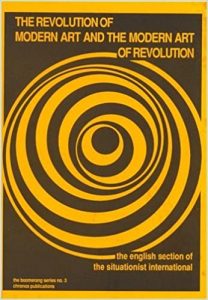
In London in 1967, Charles Radcliffe, a Situationist supporter who later formed a hash-smuggling syndicate with Howard Marks, co-authored a cultural/political manifesto with three English members of the Situationist International: Timothy Clark, Chris Gray and Donald Nicholson-Smith. The manifesto highlighted the Dadaists and Surrealists of the inter-war period as their forerunners; as engaged in ‘a revolutionary avant-garde experimenting with a new life-style, drawing on new techniques, which were simultaneously self-expressive and socially disruptive. Art was a series of free experiments in the construction of a new libertarian order’. The Situationists however, went even further than their revolutionary predecessors:
‘Our wildest fantasies are the richest elements of our reality. They must be given real, not abstract powers. Dynamite, feudal castles, jungles, liquor, helicopters, laboratories… everything and more must pass into their service’.[xii]
When the Toronto Expo-67 festival exhibited cybernetic and televisual technology which pointed the way towards virtual reality computer games, the English Situationists commented:
‘Still more sinister is the combination of total kinetic environments and a stiff dose of acid. “We try to vaporise the mind,” says a psychedelic artist, “by bombing the senses” … To date Leary is the only person to have attempted to pull all this together. Having reduced everyone to a state of hyper-impressionable plasticity, he incorporated a backwoods myth of the modern-scientific-truth-underlying-all-world-religions, a cretin’s catechism broadcast persuasively at the same time as it was expressed by the integral manipulation of sense data… a crass manipulation of subjective experience accepted ecstatically as a mystical revelation’.
They did, however, take Leary seriously, carefully adding that, ‘Leary’s personal vulgarity should not blind anyone to the possibilities implicit in this’. ‘The urban guerrilla’ (using the term somewhat metaphorically) would ‘have to be inventive. We must learn to subvert existing cities, to grasp all the possible and the least expected uses of time and space they contain. Conditioning must be reversed’.
(C) All rights reserved. Please contact the editor of this for enquiries about fair use.
[i] Ibid.
[ii] Greil Marcus, Preface to Alexander Trocchi, Cains Book.
[iii] Guy Debord, “Theory of The Dérive,” International Situationist, No. 2 (1958), S.I. Anthology, p. 23,pp.50-4.
[iv] Thomas De Quincey, Confessions of an English Opium-Eater, p.27.
[v] Debord, ibid.
[vi] G Marcus, Lipstick Traces, p.388.
[vii] Guy Debord, Jacqueline de Jong and Asger Jorn – ‘Hands Off Alexander Trocchi!’, Situationist International, October 1960.
[viii] Leary, Flashbacks, p.132.
[ix] Sigma Portfolio No. 5, 1964. Reprinted in A Life in Pieces – Reflections on Alexander Trocchi. Eds A Campbell and T Niel. Rebel Inc. 1999.
[x] Jonathan Green, All Dressed Up – The Sixties and the Counter-culture, ps.128-47.
[xi] Marcus, Lipstick Traces, p.387; Situationist Anthology, p.204-212.
[xii] Chris Gray, TJ Clarke, Donald Nicholson-Smith, The Revolution of Modern Art and the Modern Art of Revolution.

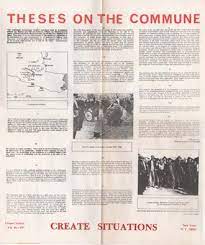
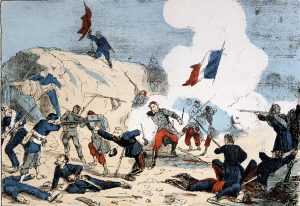

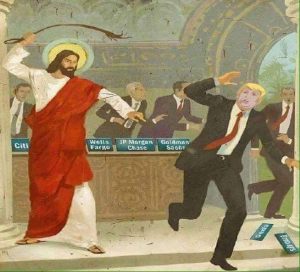
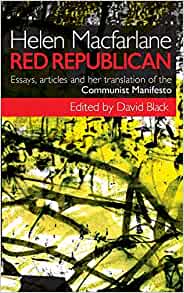
 (27 November 2020)
(27 November 2020)